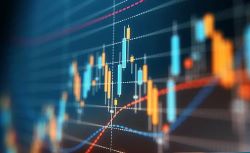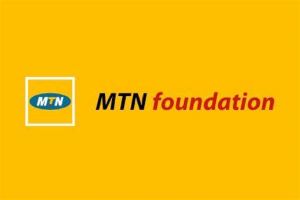What is Data Analysis? A Comprehensive Guide for Beginners
Data analysis has become a cornerstone of modern decision-making across various industries. From businesses seeking to optimize their operations to governments aiming to craft better policies, the ability to interpret and leverage data is crucial. For beginners, understanding what data analysis is, its processes, and its applications can be a game-changer in both professional and personal contexts.
This comprehensive guide will walk you through the essentials of data analysis, including its definition, key concepts, tools, and methodologies. By the end of this guide, you’ll have a solid foundation to start your journey into the world of data analysis.
What is Data Analysis?
Definition and Importance
Data analysis is the process of examining, cleaning, transforming, and modeling data to uncover useful information, draw conclusions, and support decision-making. It involves a series of steps aimed at making sense of complex data sets and extracting valuable insights.
The importance of data analysis cannot be overstated. In an era where data is generated at an unprecedented rate, the ability to analyze this data effectively is essential for:
- Informed Decision-Making: Data analysis helps organizations and individuals make decisions based on empirical evidence rather than intuition alone.
- Identifying Trends: By analyzing data, one can identify patterns and trends that provide insights into past performance and future outcomes.
- Problem-Solving: Data analysis can help pinpoint issues and inefficiencies, leading to more effective solutions and improvements.
- Predictive Analysis: Through data analysis, it is possible to forecast future events or behaviors, enabling proactive strategies and planning.
Types of Data Analysis
There are several types of data analysis, each serving different purposes:
- Descriptive Analysis: This involves summarizing historical data to understand what has happened. Techniques include calculating averages, percentages, and visualizing data through charts and graphs.
- Diagnostic Analysis: This type focuses on understanding the causes behind past events. It seeks to answer questions like “Why did this happen?” and often involves correlational studies and causation analysis.
- Predictive Analysis: Predictive analysis uses historical data to make forecasts about future events. Techniques such as regression analysis, machine learning, and statistical modeling are commonly employed.
- Prescriptive Analysis: Prescriptive analysis recommends actions based on data insights. It answers questions like “What should we do?” and often involves optimization and simulation techniques.
- Exploratory Analysis: This type involves exploring data to uncover patterns, anomalies, or relationships that were not previously known. It is often used in the early stages of data analysis.
The Data Analysis Process
1. Data Collection
Data collection is the first step in the data analysis process. It involves gathering data from various sources, which can include:
- Surveys and Questionnaires: Collecting data directly from individuals through structured forms.
- Databases: Extracting data from existing databases or data warehouses.
- Web Scraping: Using tools to extract data from websites.
- APIs: Accessing data from third-party services via Application Programming Interfaces (APIs).
When collecting data, it is crucial to ensure that the data is relevant, accurate, and reliable. The quality of your data collection process directly impacts the quality of your analysis.
2. Data Cleaning
Data cleaning involves preparing the collected data for analysis by removing or correcting inaccuracies. This step is critical as it ensures the data is accurate and consistent. Common data cleaning tasks include:
- Removing Duplicates: Identifying and eliminating duplicate entries.
- Handling Missing Values: Addressing gaps in the data by either imputing values or excluding incomplete records.
- Correcting Errors: Fixing inaccuracies such as typos or formatting issues.
- Standardizing Data: Ensuring consistency in data formats, units, and labels.
3. Data Exploration
Data exploration involves examining the cleaned data to understand its structure, patterns, and relationships. This step often includes:
- Descriptive Statistics: Calculating measures such as mean, median, mode, and standard deviation.
- Data Visualization: Creating visual representations of the data, such as histograms, scatter plots, and box plots, to identify trends and patterns.
- Correlation Analysis: Assessing the relationships between different variables to understand how they interact.
4. Data Modeling
Data modeling involves applying statistical or machine learning techniques to the data to make predictions or identify patterns. Common methods include:
- Regression Analysis: Modeling the relationship between dependent and independent variables to make predictions.
- Classification: Assigning data points to predefined categories based on their attributes.
- Clustering: Grouping similar data points together to identify natural clusters within the data.
- Time Series Analysis: Analyzing data points collected or recorded at specific time intervals to identify trends and forecast future values.
5. Data Interpretation
Data interpretation is the process of drawing conclusions from the analyzed data. This step involves:
- Synthesizing Findings: Summarizing the insights gained from data modeling and exploration.
- Contextualizing Results: Relating the findings to the initial objectives and understanding their implications.
- Communicating Insights: Presenting the results in a clear and understandable manner, often using visualizations and reports.
6. Data Visualization
Data visualization is a crucial part of data analysis, as it helps communicate complex information in a more digestible format. Effective data visualizations include:
- Charts and Graphs: Bar charts, line graphs, pie charts, and scatter plots that illustrate data trends and distributions.
- Dashboards: Interactive tools that provide a comprehensive view of key metrics and insights.
- Heatmaps: Visual representations of data density or intensity using color gradients.
7. Decision Making and Action
The ultimate goal of data analysis is to support decision-making. Based on the insights derived, organizations and individuals can:
- Develop Strategies: Create data-driven strategies and plans to achieve desired outcomes.
- Implement Changes: Make informed adjustments to processes, products, or services.
- Monitor Outcomes: Continuously track and evaluate the impact of decisions to ensure they are effective.
Key Concepts in Data Analysis
Big Data
Big Data refers to extremely large data sets that may be analyzed computationally to reveal patterns, trends, and associations. The volume, variety, and velocity of big data present both opportunities and challenges for data analysis. Tools and technologies such as Hadoop and Spark are commonly used to process and analyze big data.
Data Mining
Data mining is the process of discovering patterns and knowledge from large data sets using techniques from statistics, machine learning, and database systems. It involves exploring data from different perspectives and summarizing it into useful information.
Data Warehousing
Data warehousing involves collecting and managing data from various sources to provide meaningful business insights. A data warehouse is a centralized repository that allows for the integration and analysis of data from disparate sources.
Machine Learning
Machine learning is a subset of artificial intelligence that involves training algorithms to make predictions or decisions based on data. Machine learning models can improve their performance over time as they are exposed to more data.
Tools and Software for Data Analysis
Spreadsheet Software
Spreadsheet software, such as Microsoft Excel and Google Sheets, is commonly used for data analysis. These tools offer functionalities for data manipulation, visualization, and basic statistical analysis. They are user-friendly and suitable for handling moderate data sets.
Statistical Software
Statistical software such as R and SAS provides advanced statistical analysis capabilities. These tools are used for complex data modeling, hypothesis testing, and data visualization.
Data Analysis Platforms
Data analysis platforms like Tableau and Power BI offer powerful data visualization and business intelligence features. They enable users to create interactive dashboards, perform data exploration, and generate reports.
Programming Languages
Programming languages such as Python and R are widely used for data analysis. Python, with libraries like Pandas, NumPy, and Matplotlib, is popular for data manipulation and visualization. R is known for its statistical analysis capabilities and extensive packages for various data analysis tasks.
Big Data Technologies
For analyzing large volumes of data, technologies such as Hadoop and Spark are employed. These tools provide distributed processing and storage solutions to handle big data challenges.
Applications of Data Analysis
Business Analytics
In the business world, data analysis is used to gain insights into customer behavior, optimize operations, and drive strategic decisions. Businesses leverage data analysis to enhance marketing strategies, improve customer experiences, and streamline supply chain management.
Healthcare
In healthcare, data analysis plays a critical role in improving patient outcomes, optimizing treatment plans, and managing public health. It is used for predictive analytics, clinical research, and health informatics.
Finance
Financial institutions use data analysis for risk management, fraud detection, and investment strategies. Analyzing financial data helps in making informed decisions about investments, loans, and financial planning.
Government and Public Policy
Governments and policymakers use data analysis to develop and evaluate public policies, manage resources, and address societal issues. Data-driven insights can inform decisions on public health, education, and infrastructure.
Sports and Entertainment
In sports, data analysis is used to enhance performance, develop game strategies, and engage with fans. In the entertainment industry, it helps in understanding audience preferences and optimizing content delivery.
Getting Started with Data Analysis
Learning Resources
To get started with data analysis, consider exploring the following resources:
- Online Courses: Platforms like Coursera, edX, and Udacity offer courses on data analysis, statistics, and programming.
- Books: Books such as “Data Science for Business” by Foster Provost and Tom Fawcett, and “Python for Data Analysis” by Wes McKinney provide valuable insights and practical knowledge.
- Tutorials and Blogs: Websites like DataCamp, Towards Data Science, and Medium offer tutorials and articles on various aspects of data analysis.
Practice and Projects
Hands-on practice is essential for mastering data analysis. Work on real-world projects, participate in data challenges on platforms like Kaggle, and apply your skills to solve problems of interest.
Networking and Community
Join data analysis communities, attend meetups, and engage with professionals in the field. Networking can provide valuable insights, support, and opportunities for collaboration.
Conclusion
Data analysis is a powerful tool that can transform raw data into actionable insights, driving informed decision-making and problem-solving across various domains. By understanding the fundamentals of data analysis, including its processes, tools, and applications, beginners can start harnessing the power of data to make a meaningful impact in their personal and professional lives.
As you embark on your data analysis journey, remember that the field is dynamic and continuously evolving. Stay curious, keep learning, and embrace the opportunities that data analysis presents in our increasingly data-driven world.




